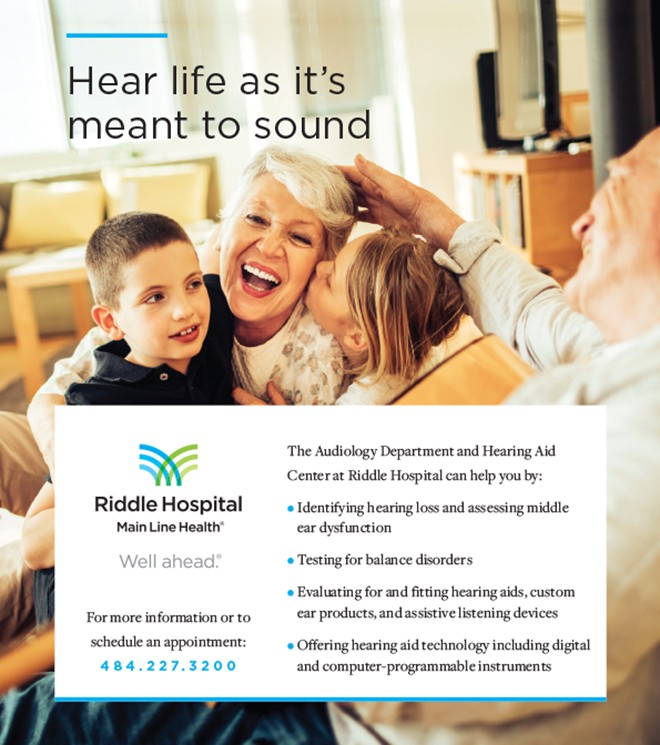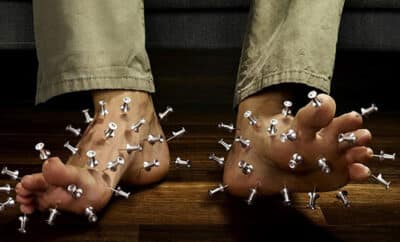Tried & True Hearing Aid Feature: The Telecoil
 By Jessica M. Bell, Au.D.
By Jessica M. Bell, Au.D.
Hearing aid technology continues to improve at a rapid rate. These rapidly developing features allow people with hearing loss to have improved hearing even in the most challenging listening environments such as groups, restaurants and even in the car. There is one hearing aid feature, however, that has been tried and true for 82 years! Since 1936, the telecoil or “tcoil” has been helping hearing aid users to hear telephone conversation without feedback. The modern-day use of the tcoil goes well beyond its original purpose for hearing on the phone. Telecoils in hearing aids or headphones are used with a “loop system” around the seated area of a theater or auditorium to help people seated in the loop with access to a tcoil to hear live theatrical presentations or lectures delivered from the stage directly to their ears.
What is a telecoil?
A telecoil is a small copper coil that is found in some hearing instruments. It is designed to communicate via electromagnetic wireless signal with a landline telephone or in a physical space that is equipped with an induction loop system. A growing number of auditoriums, theaters, senior living communities and churches are offering a loop system. Some public places like stores have loop systems around cashiers to ease communication with customers who have tcoil access.
How could a telecoil benefit me?
A telecoil could be beneficial if the hearing aid user still experiences difficulty understanding on a land line telephone, in lectures, at church or in the theater. The electromagnetic signal inherently becomes clearer because the speech signal is transmitted directly from the speaker into both hearing aids, improving speech from a distance, in the presence of background noise or while on the telephone.
Why would I want a telecoil in my hearing aids?
You have a profound hearing loss. People who have a profound hearing loss often times have increased difficulty understanding speech in large rooms or on the telephone.
Your ability to understand speech is poor, especially at a distance from the speaker. A telecoil can help you overcome challenges related to background noise and physical distance from the speaker.
You spend a fair amount of time on the phone or in a looped area. If you’re already spending time on the telephone or in an area that has a loop system, you may want to tap into the benefits the telecoil can offer you!
What are the limitations of the telecoil?
You have dexterity issues. The telecoil often requires the hearing aid wearer to push a button to access the program. Ease of accessibility may be difficult if you have dexterity issues.
Telecoil loop systems are often difficult to find. Public places that are looped are limited at present in the mid-Atlantic region of the U.S.
You primarily use a cell phone. A cell phone does not offer a strong electromagnetic signal and, therefore, does not communicate well with the telecoil. In this case, there are other options you may want to discuss with your audiologist.
While the telecoil can offer significant advantages for some, it is not for everyone. Each person has a unique hearing experience. When discussing your hearing difficulties and listening needs with your audiologist, ask if a telecoil is right for you!
The Riddle Experience:
The audiologists at Riddle Hospital share the same goals that you do – to improve hearing and understanding even in your most difficult listening environments. A comprehensive audiological evaluation will allow the audiologist to make the best recommendations for a listening needs assessment and live hearing aid demonstration in order to develop a hearing treatment plan tailored to your listening needs.
For more information visit our website www.mainlinehealth.org/riddleaudiology or call
484-227-3200.
Jessica M. Bell, AuD Doctor of Audiology/Director
Alexa R. Lynch, Au.D Doctor of Audiology
Denise E. Stewart, M.S. Clinical Audiologist
Lisa C. Mackenzie, M.S. Clinical Audiologist
RIDDLE HOSPITAL
Audiology & Hearing Aid Center
1118 West Baltimore Pike Suite 207
Media, PA 19063
(484) 227-3200





